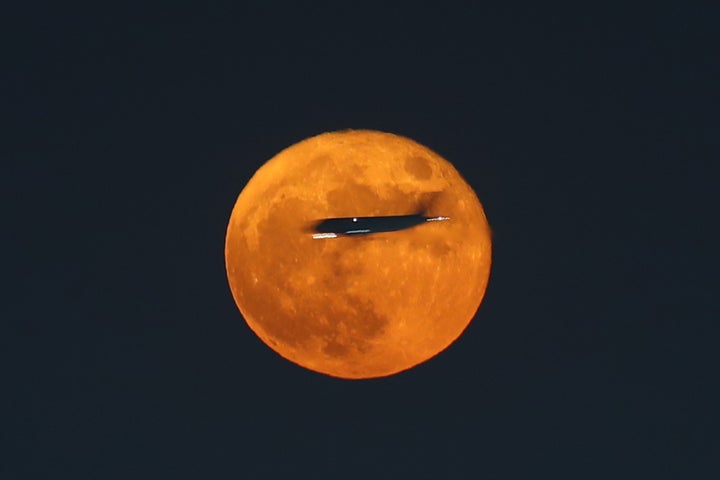
2023 is about to unveil its first full supermoon of the year on July 3.
Yes, that means the moon will be around 14% larger than normal, and brighter, because it is closest to the Earth in its elliptical orbit and a full moon.
You can also see it as a way of getting a flash of history, according to museum planetary science researcher, professor Sara Russell.
She explained: “The moon is actually, very slowly, moving away from Earth, so our supermoon today was just a typical Moon a billion years ago.”
Even more of an excuse to get the perfect photo then.
And this time, you’re not going to just have a strange blurry photo. This time, you’re going to capture an image that worthy of putting on social media (or, try at least).
Here are the top tips to make sure you get that breath-taking shot, even on your smartphone.
1. Plan ahead
According to the Natural History Museum, the supermoon will look at its largest on the horizon, due to a phenomenon known as “moon illusion”.
Professor Russell, told the museum: “The moon, of course, does not vary in size according to where it appears in the sky.
“It may be that when it is near the horizon there are objects, like trees and buildings, that it can be compared in size to, whereas in the middle of the sky there are no points of comparison, which makes it seem smaller.”
According to Mark Lord, founder and owner of Mark Lord Photography, sunset is the best time to snap the supermoon. He explained: “Fiery skies, golden tones and interesting cloud formations can make for an interesting backdrop.”
It’s easier to control your camera’s exposure when light levels are higher, too.
So make sure you find a good vantage point, with plenty of space to move around and see it from a slightly different perspective.
Try to choose a landmark or natural feature in the foreground as well, to show a sense of scale when the moon is close to the horizon.

2. Turn HDR on – and turn flash off
That’s the high dynamic range (not every phone has that), but it helps increase the contrast between darkest and lightest parts of an image, and makes it “more striking”, according to Lord.
Even if you don’t have that feature, definitely turn the flash off – the moon is much too far away to be lit up by your camera.
The supermoon will be extra bright anyway, casting about 30% more light on the planet compared to when it is at its dimmest.
3. Focus on the moon
The photographer also advised: “When using a smartphone, it can be difficult to control brightness. If you choose to focus on buildings or other features in the foreground of your image, this may overexpose the moon.”
So try to make sure the photo focuses on the object itself.
4. Don’t zoom in
Lord explained: “Trying to zoom in on an object, particularly one as far away as the moon, may compromise the resolution and quality of an image.
“Earlier smartphones only have the capacity for digital zoom. With digital zoom, there is no change in focal length like there is with optical zoom. The phone instead uses software to crop a section from an image, which is then expanded to fill the display frame. Images are often upscaled via algorithms, but image quality is still compromised.”
Basically, try to get a landscape-style photo to add depth and variety for more objects and landmarks in the foreground.

5. Lower the ISO
ISO is the sensitivity of your smartphone’s camera and control the image’s brightness, so lower it to around 100.
Lord explained: “This can be done on most smartphones without the use of an app. This will prevent the moon from appearing too brightly in your picture.
“When it’s dark, the shutter speed should typically be lowered to allow more light to reach your cameras sensor.”
Try to take several shots though and play around with shutter speeds, too.
6. Experiment with a tripod
According to Lord, these can “vastly improve the quality of your images”, especially if you’re taking a picture at night with low shutter speed.
But, the photographer added: “If you don’t have access to a tripod, try steadying your arm against a wall or other solid surface.”
7. Get creative
Lord pointed out that it’s hard to get a good picture of the moon without a telescope or specialist camera, so try improve your image with other props.
He said: “Ask another person to stand in the foreground of your photo, or position yourself in front of a photogenic tree or building. Church silhouettes can make for a fantastic gothic image.”
8. Don’t give up
If you don’t manage it this time though, don’t panic.
According to the Natural History Museum, there will four (yes, four!) supermoons this year: July 3, August 1, August 31 and September 29.
And, don’t worry because the best is yet to come.
The closest supermoon of this century will happen on December 6, 2052 – so you have some time to practise your skills yet.